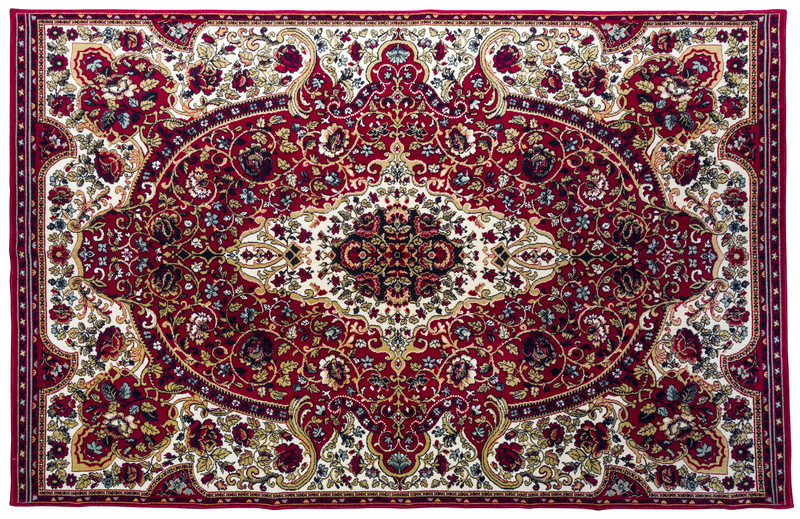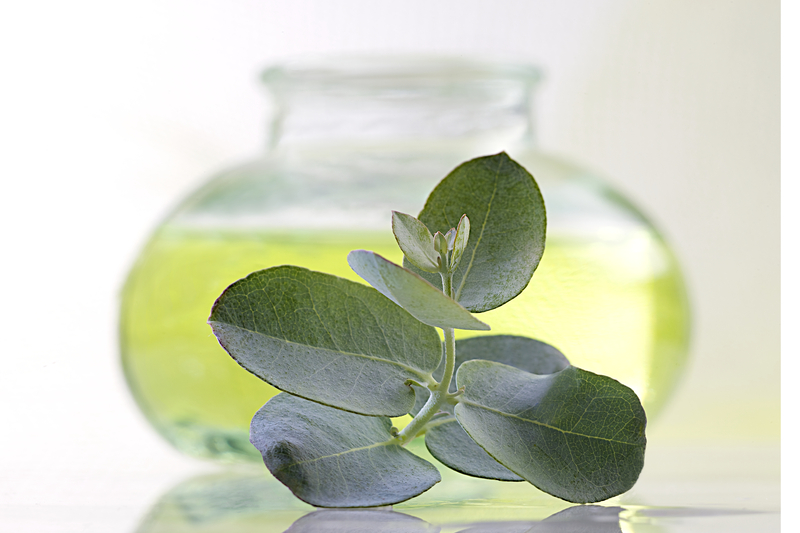Keeping Velvet Curtains Beautiful with Safe Cleaning
Posted on 25/09/2025
Keeping Velvet Curtains Beautiful with Safe Cleaning
Velvet curtains exude luxury and sophistication, offering a rich texture and elegant appearance to any interior space. Their soft, plush surface makes them a favourite among those looking to add drama and warmth to their home decor. However, velvet's sumptuous nature also means it requires special care. If you're wondering how to keep your velvet curtains beautiful and pristine, this comprehensive guide will walk you through safe, effective cleaning methods and essential maintenance tips.

Understanding Velvet: The Unique Fabric
Before diving into cleaning techniques for velvet curtains, it's important to understand what makes velvet unique. Velvet is a woven fabric with a dense pile of evenly cut fibres that have a smooth nap. This gives it that recognizable soft texture and stunning sheen. Velvet can be made from several materials, including silk, cotton, polyester, and blends.
- Silk velvet: The most luxurious, delicate, and expensive.
- Cotton velvet: Durable, less shiny, often found in modern interiors.
- Synthetic (polyester, rayon): Easier to clean, family-friendly, budget-conscious.
Each type of velvet responds differently to cleaning, so always check manufacturer labels before proceeding.
Why Do Velvet Curtains Require Special Care?
Velvet's beauty lies in its pile--those upright fibres that create the fabric's depth and shimmer. Improper cleaning can crush, flatten, or damage these fibres, leading to a dull, matted curtain. Water spots, dust, and stains are more visible on velvet, making safe cleaning even more crucial. Safe cleaning methods not only preserve appearance and colour, but also extend curtain lifespan.
How Often Should Velvet Curtains Be Cleaned?
Maintaining velvet drapes and curtains isn't about frequent washing; it's about regular, gentle upkeep. Unless exposed to heavy smoke, pet hair, or multiple stains, velvet curtains typically require full cleaning only once or twice per year.
- Light care (dusting, brushing): Weekly or fortnightly
- Spot cleaning: As soon as spills or marks appear
- Full cleaning (professional or DIY): Every 6-12 months, depending on household factors
Safe Cleaning Methods for Velvet Curtains
The safest cleaning methods depend on your curtain's fabric content and care label. Below are general strategies, but always test in an inconspicuous area before extending to the entire curtain.
1. Regular Dusting and Brushing
Regular dust removal is essential in keeping velvet window treatments looking beautiful.
- Use a vacuum: Attach a soft brush or upholstery tool. Gently vacuum in the direction of the nap to lift dust and avoid crushing the pile.
- Soft bristle brush: A gentle up-and-down stroke following the nap lifts surface dust and keeps the velvet looking plush.
This simple maintenance is crucial for preserving velvet's luster and extends the time between full cleanings.
2. Gentle Spot Cleaning
Stains can quickly mar the look of your curtains, so prompt action is vital. Here's how to perform safe spot cleaning for velvet:
- Blot: Gently blot spills with a clean, dry white cloth as soon as they occur. Avoid rubbing, which presses stains deeper and can crush the nap.
- Mild cleaning solution: Mix a few drops of mild dish soap or gentle upholstery shampoo in cool water. Dampen (do not soak) a clean cloth with the solution and dab the spot lightly.
- Rinse: Use a second cloth dampened with plain water to gently blot away soapy residue.
- Dry: Dab with a dry towel and let the fabric air dry fully. Do not use direct heat such as a hairdryer, which can damage fibres.
- Restore pile: If the nap appears flattened, a soft brush or gentle steaming (see below) can help to fluff it back up once dry.
Always test any cleaning solution on a small hidden area first to ensure no colour loss or watermarking will occur.
3. Steam Cleaning Velvet Curtains
For velvet, steam is often safer than water. Steam cleaning both freshens and rejuvenates the fabric's appearance.
- Handheld steamer: Hold the nozzle several inches from the curtain. Use gentle strokes in the direction of the pile. This lifts dust, removes odours, and refreshes the nap.
- Never saturate the fabric--excess moisture can cause shrinking or staining.
Tip: Steam is also effective for smoothing out wrinkles after washing or spot cleaning.
4. Professional Dry Cleaning
For delicate velvet curtains (especially silk or vintage), professional dry cleaning is often the safest choice. Professionals use solvents and extraction techniques that don't involve water, reducing risk of pile damage, shrinking, or staining.
- If a manufacturer's label says "dry clean only," don't attempt to launder at home.
- Always inform your cleaners that the item is velvet and note any stains or problem areas.
5. Can You Machine Wash Velvet Curtains?
Machine-washing is generally not recommended for velvet, especially for silk or cotton varieties. Some modern synthetic velvets, however, may tolerate gentle machine washing.
- Check care labels. If machine-washable, use a delicate cycle, cold water, and mild detergent.
- Place curtains in a mesh bag to protect them.
- Never wring or twist velvet. Gently remove excess water by pressing between towels.
- Line-dry or lay flat to dry. Avoid direct sunlight, which can fade dyes.
How to Keep Velvet Curtains Beautiful Between Cleanings
Safe cleaning is crucial, but day-to-day practices also make a significant difference in curtain appearance and longevity:
- Regularly rotate curtains: Move panels so they wear evenly and aren't constantly exposed to direct sunlight.
- Use window sheers: Pair velvet with lighter sheers to defend against fading and dust build-up.
- Avoid excess moisture: Humidity and condensation encourage mildew and watermarking. Ventilate rooms and avoid letting curtains come in direct contact with damp windows.
- Handle with clean hands: Velvet reveals smudges, so always keep your hands clean when adjusting drapes.
- Gently shake out curtains: Every few weeks, shake panels outside to remove surface dust before it settles into fibres.
Common Velvet Curtain Cleaning Mistakes to Avoid
- Using harsh chemicals: Bleach, ammonia, and strong detergents can ruin velvet's soft feel and vibrant colour.
- Saturating with water: Velvet's dense weave doesn't dry quickly. Wetting can cause shrinkage, dye bleeding, and watermarking.
- Wringing or twisting fabric: This can permanently crush and distort the pile.
- Applying direct heat: Hot irons or hairdryers can burn or melt fibres, especially in synthetics.
- Scrubbing stains: Aggressive scrubbing damages the nap and spreads stains further into the fabric.
Take a gentle, patient approach--velvet rewards careful handling!
DIY Velvet Curtain Freshening Methods
Between cleanings, you can freshen your velvet curtains with these at-home tricks:
- Baking soda sprinkle: Lightly sprinkle baking soda on curtains, leave for 20 minutes, and gently vacuum to absorb odours.
- Fabric freshener spray: Use a water-based, alcohol-free spray lightly and at a distance to avoid water spots.
- Sunshine airing: Air curtains outdoors on a breezy, shaded day to help disperse stale smells. Avoid prolonged direct sunlight to prevent fading.
Treating Common Velvet Curtain Issues
1. Removing Wrinkles from Velvet Curtains
Wrinkles are common after storage or cleaning. Safely remove them using:
- Steaming: As described above, a handheld steamer is ideal. Hang curtains and steam downward, allowing gravity to assist.
- Ironing (if allowed): Place a pressing cloth between the iron and velvet, and use the lowest heat setting. Avoid pressing down on the nap.
2. Reviving Crushed Pile
If areas of your velvet curtains appear flat or shiny:
- Dampen a cloth with distilled water, lay it on the crushed area, and iron gently on the reverse side with a pressing cloth. Do not touch the velvet directly with the iron.
- Light steaming followed by gently brushing the nap can also restore the plush appearance.
3. Dealing with Persistent Odours
Persistent musty or smoky odours can linger in velvet. In addition to airing and using baking soda, consider hanging the curtains over a bathtub filled with hot water and a few drops of essential oil. The steam will gently deodorize the fabric.
Storing Velvet Curtains Safely
Proper storage ensures your velvet curtains remain beautiful when not in use:
- Clean curtains before storing to prevent set-in stains and odours.
- Roll rather than fold to avoid deep creases.
- Store in a breathable cotton bag instead of plastic to prevent mildew.
- Keep away from direct sunlight, dampness, and pests.

When to Replace Velvet Curtains
Even with best care, velvet curtains eventually age. Be attentive to signs such as:
- Permanent crushing, thinning, or bald spots
- Stains that set and won't come out
- Significant fading or colour loss
- Unravelling hems or tears that can't be mended
Upcycling old velvet curtains into cushions or soft furnishings is a stylish, sustainable option!
Conclusion: Keep Velvet Curtains Luxurious for Years
Velvet curtains transform any room with their unique elegance, warmth, and texture. Preserving their beauty with safe cleaning is simple when armed with the right knowledge. Remember, gentle is always better--regular dusting, spot cleaning spills, occasional professional cleaning, and thoughtful daily habits combine to keep your velvet curtains looking plush and flawless year after year. With care and attention, your velvet drapes will remain a showstopping focal point in your home.
Need more tips on velvet curtain care? Leave your questions or experiences below--we love helping fellow velvet fans keep their spaces stylish!



